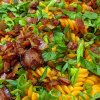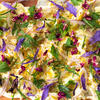Popular
Latest From the Show
Like many, pizza is one of my go-to foods for just about any occasion. I mean, what's not to love? Happy? Eat pizza. Emotional? Eat pizza. Celebrating? Eat Pizza. You get the idea.
You can make every part of a pizza the way you want it — from the crust to the toppings. No matter what dietary restrictions/preferences you might have, there is a pizza somewhere out there for you. All across the world, you can find a different type of "pizza" and different preparation, too. It truly is a universal comfort food. We are all knee-deep in a very strange time right now, and it seems that many are turning to cooking and baking to help pass the time (just look at the flour shelves at the grocery store). Yeast is another item that is hard to come by these days. If you're lucky enough to have some flour at home but are short on yeast, I've got you covered.
Traditionally, pizza crust is made from flour, water, yeast, salt, and sugar. Yeast converts sugar into carbon dioxide gas, which in turn creates air pockets and causes the dough to rise. Once exposed to heat, the yeast dies and the air pockets set. When you eliminate yeast from the equation, other leavening agents can be used to fill the void. Although you won't quite get those air bubbles you might be used to from your favorite pizzeria, I experimented with baking soda and baking powder and tried to create a satisfying end result and it could not be easier.
- Ben Perez, culinary team member
Ben's Homemade Pizza Tips:
- I used AP flour, because that is what I had on hand. You can experiment with whole wheat flour, bread flour, gluten-free flour, etc. The amount of water might vary slightly, and you can always add more, but it's hard to remove. So start slowly and add water as needed. As long as your dough is slightly tacky but not sticky, you're good to go!
- Pizza is all about preference. I went classic with tomato sauce, mozzarella and pepperoni, but by all means, use whatever you like or whatever you have on hand. There are no rules when it comes to pizza toppings!
- I like to use cornmeal or semolina on my pan. I think it adds a nice texture to the bottom of the crust. If you don't have either, no problem.
- For easy dough transfer, you can roll dough out on a piece of parchment that is a little larger than your pan, using the excess as "handles."
- I like to use olive oil spray or brush some olive oil around the crust before it goes back into the oven for the final bake. It helps the crust get crispy and golden brown.
Ingredients
- 2 cups all-purpose flour, plus more for dusting
- 2 teaspoons baking powder
- ¼ teaspoon baking soda
- 1 teaspoon kosher salt
- ½ teaspoon granulated sugar
- ¾ cup warm water (between 100˚F to 110˚F)
- 2 tablespoons olive oil
- 1 tablespoon cornmeal or semolina flour
- Preferred pizza toppings, such as sauce, shredded cheese(s), vegetables and meats
Yield
Preparation
Preheat oven to 450°F and place a pizza stone or flat/inverted baking sheet inside. Once oven is preheated, let pan heat for at least 15 minutes.
In a medium bowl, sift flour, baking powder and soda, salt, and sugar. Add warm water and olive oil. Stir to combine with a wooden spoon. The dough will be shaggy.
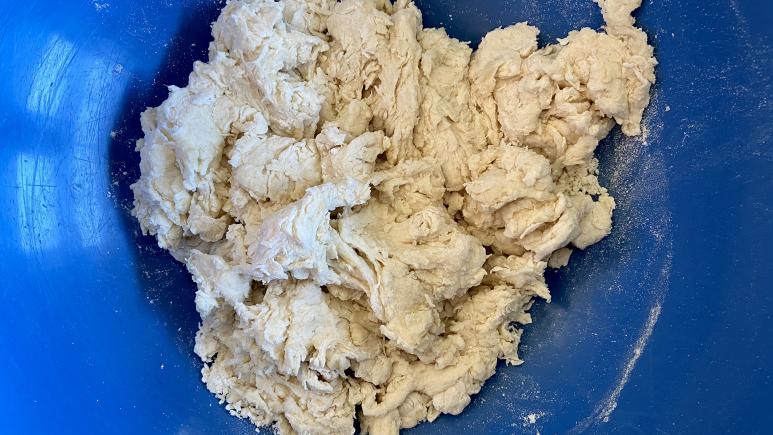
Combine dough together with your hands and knead for 1 to 2 minutes until smooth. If the dough feels sticky, add a light sprinkle of flour and knead until tacky to touch.
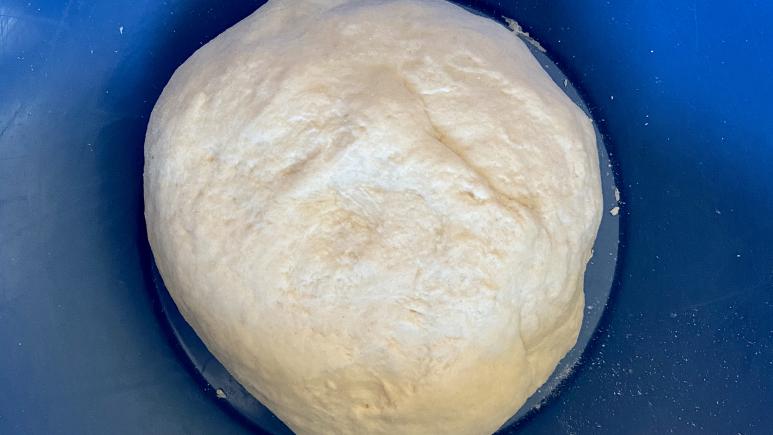
Turn out the dough onto a lightly floured work surface. Using a rolling pin, roll dough to desired shape and size using the dimensions of your preheated pizza stone or pan as a guide.
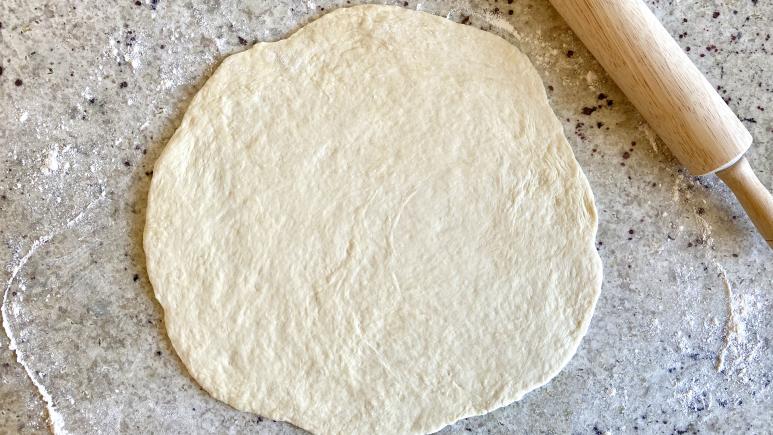
When your pan is thoroughly preheated, sprinkle evenly with cornmeal or semolina. Carefully transfer rolled-out dough to the pan and parbake for 5 minutes to set.
Top parbaked crust with toppings of choice and bake an additional 10 to 12 minutes until cheese is melted and crust is lightly browned. Slice and serve.

